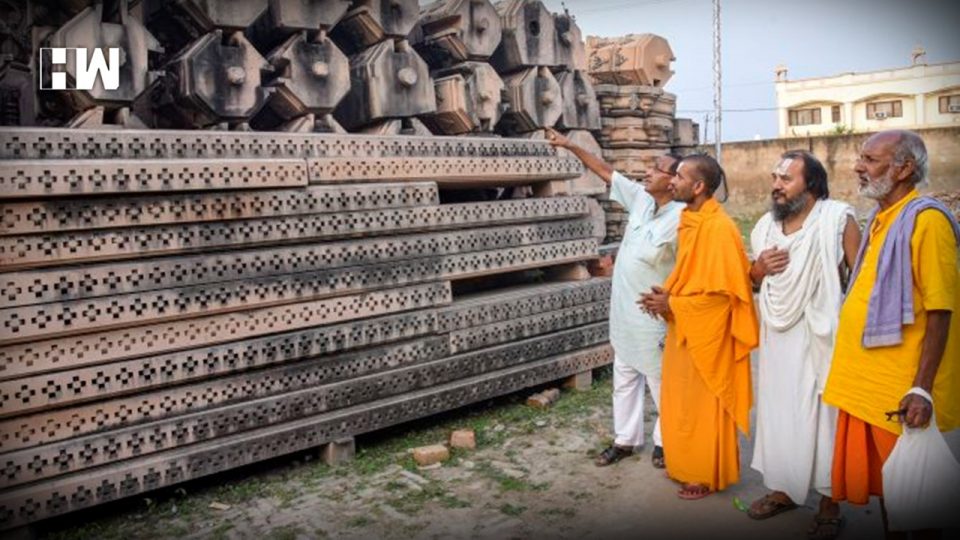The Supreme Court observed that the Babri Masjid was not built on vacant land. The structure below the mosque was not an Islamic structure.
New Delhi| The constitution bench of five judges of the Supreme Court on the Ayodhya dispute began reading the verdict at 10:30 am on Saturday. Chief Justice Ranjan Gogoi said that the Constitution Bench of five judges is giving a unanimous verdict. In the 45-minute-long decision, the CJI said that the trust should be built for the construction of the temple and plan it in 3 months. The bench also directed the Muslim side to be provided alternative land to build the mosque.
CJI Gogoi said that Hindu-Muslims consider the disputed place as the holy land, but the ownership cannot be decided by faith. The bench said that the demolished structure is the birthplace of Lord Rama, this belief of Hindus is unquestioned.
Here are the highlights of the Supreme Court’s decision
- The Chief Justice said – We are giving a unanimous verdict. This court should accept the faith of religion and devotees. The court must maintain a balance.
- Chief Justice Ranjan Gogoi said – Mir Baqi built Babri Masjid. It would not be appropriate for the court to enter theology.
Breaking News: #SupremeCourt orders arrangement of alternate land for Muslims to build mosques. Ramlala Virajman gets disputed land. Nirmohi Akhada suit dismissed. Suitable 5-acre plot to be given to Sunni Waqf board. Centre given 3 months to set up a trust under Ayodhya act.
— HW News English (@HWNewsEnglish) November 9, 2019
- The disputed land was marked as government land in the revenue records.
- Ram Janmabhoomi is not a judicial person, whereas Lord Rama can be a judicial person.
- The disputed structure was not a structure of Islamic origin. The Babri Masjid was not built on vacant land. The structure below the mosque was not an Islamic structure.
#SupremeCourt: Devotees of both faiths offered prayers at the disputed site. Historical accounts indicate that the Hindu belief that Lord Ram was born there is not wrong #AYODHYAVERDICT #RamMandir #BabriMasjid
— HW News English (@HWNewsEnglish) November 9, 2019
- The Archaeological Survey of India (ASI) has confirmed the fact that there was a temple under the demolished structure. Describing archaeological evidence as merely an opinion would be an insult to ASI. However, the ASI did not establish the fact that the temple was demolished and built a mosque.
- Hindus consider this place to be the birthplace of Lord Rama, even Muslims say the same about the disputed place. Books and ancient texts were written by ancient travellers indicate that Ayodhya has been the birthplace of Lord Rama. Historical examples also indicate that Ayodhya has been the birthplace of Lord Rama in the faith of Hindus.
- The demolished structure is the birthplace of Lord Rama, this belief of Hindus is unquestioned. However, ownership cannot be established on the basis of religion, faith. These can be signs of deciding a dispute.
- It has been found that Hindus used to worship at Ram Chabutara and Sita Rasoi even before the British era. Evidence recorded suggests that the exterior of the disputed land was under the control of the Hindus.
- The Supreme Court rejected the Shia Waqf Board’s special permission petition challenging the 1946 Faizabad court order. The Shia Waqf Board’s claim was over the disputed structure. This has been rejected.
- The Supreme Court rejected the Nirmohi Akhara claim. The Nirmohi Akhara sought the right to manage the birthplace.
As an independent media platform, we do not take advertisements from governments and corporate houses. It is you, our readers, who have supported us on our journey to do honest and unbiased journalism. Please contribute, so that we can continue to do the same in future.

